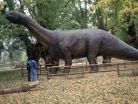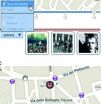Mutations in the human mitochondrial genome are implicated in neuromuscular diseases, metabolic defects and aging. There currently are no methods to successfully repair or compensate for these mutations, said study co-senior author Dr. Michael Teitell, a professor of pathology and laboratory medicine and a researcher with the Eli and Edythe Broad Center of Regenerative Medicine and Stem Cell Research at UCLA.
Between 1,000 and 4,000 children per year in the United States are born with a mitochondrial disease and up to one in 4,000 children in the U.S. will develop a mitochondrial disease by the age of 10, according to Mito Action, a nonprofit organization supporting research into mitochondrial diseases. In adults, many diseases of aging have been associated with defects of mitochondrial function, including diabetes, Parkinson's disease, heart disease, stroke, Alzheimer's disease and cancer.
"I think this is a finding that could change the field," Teitell said. "We've been looking to do this for a long time and we had a very reasoned approach, but some key steps were missing. Now we have developed this method and the next step is to show that what we can do in human cell lines with mutant mitochondria can translate into animal models and, ultimately, into humans."
The study appears March 12, 2012 in the peer-reviewed journal Proceedings of the National Academy of Sciences.
The current study builds on previous work published in 2010 in the peer-reviewed journal Cell, in which Teitell, Carla Koehler, a professor of chemistry and biochemistry and a Broad Stem Cell Research Center scientist, and their team uncovered a role for an essential protein that acts to shuttle RNA into the mitochondria, the energy-producing "power plant" of a cell.
Mitochondria are described as cellular power plants because they generate most of the energy supply within a cell. In addition to supplying energy, mitochondria also are involved in a broad range of other cellular processes including signaling, differentiation, death, control of the cell cycle and growth.
The import of nucleus-encoded small RNAs into mitochondria is essential for the replication, transcription and translation of the mitochondrial genome, but the mechanisms that deliver RNA into mitochondria have remained poorly understood.
The study in Cell outlined a new role for a protein called polynucleotide phosphorylase (PNPASE) in regulating the import of RNA into mitochondria. Reducing the expression of PNPASE decreased RNA import, which impaired the processing of mitochondrial genome-encoded RNAs. Reduced RNA processing inhibited the translation of proteins required to maintain the mitochondrial electron transport chain that consumes oxygen during cell respiration to produce energy. With reduced PNPASE, unprocessed mitochondrial-encoded RNAs accumulated, protein translation was inhibited and energy production was compromised, leading to stalled cell growth.
The findings from the current study provide a form of gene therapy for mitochondria by compensating for mutations that cause a wide range of diseases, said study co-senior author Koehler.
"This opens up new avenues to understand and develop therapies for mitochondrial diseases," Koehler said. "This has the potential to have a really big impact. We just have to get it to the next step."
Gene therapy is often used to express proteins that can treat the cause of a variety of diseases. In this case, post-doctoral fellow Geng Wang developed a strategy to target and import specific RNA molecules encoded in the nucleus into the mitochondria and, once there, to express proteins needed to repair mitochondrial gene mutations.
First, the research team had to figure out a way to stabilize the reparative RNA so that it was transported out of the nucleus and then localized to the mitochondrial outer membrane. This was accomplished by engineering an export sequence to direct the RNA to the mitochondrion. Once the RNA was in the vicinity of the transport machinery on the mitochondrial surface, then a second transport sequence was required to direct the RNA into the targeted organelle. With these two modifications, a broad spectrum of RNAs were targeted to and imported into the mitochondria, where they functioned to repair defects in mitochondrial respiration and energy production in two different cell line models of human mitochondrial disease.
"This study indicates that a wide range of RNAs can be targeted to mitochondria by appending a targeting sequence that interacts with PNPASE, with or without a mitochondrial localization sequence, to provide an exciting, general approach for overcoming mitochondrial genetic disorders," the study states.
Going forward, Teitell and Koehler will test their new method in small animal models to determine whether they can fix a mitochondrial defect as it occurs in a whole organism. One potential use for the new method would also be to repair mitochondrial defects in reprogrammed, embryonic or adult-type stem cells for use in regenerative medicine therapies.
INFORMATION:
The one-year study was supported by the California Institute of Regenerative Medicine, the National Institutes of Health, the American Heart Association and the Broad Stem Cell Research Center at UCLA.
The stem cell center was launched in 2005 with a UCLA commitment of $20 million over five years. A $20 million gift from the Eli and Edythe Broad Foundation in 2007 resulted in the renaming of the center. With more than 200 members, the Eli and Edythe Broad Center of Regenerative Medicine and Stem Cell Research is committed to a multi-disciplinary, integrated collaboration of scientific, academic and medical disciplines for the purpose of understanding human adult and embryonic stem cells. The center supports innovation, excellence and the highest ethical standards focused on stem cell research with the intent of facilitating basic scientific inquiry directed towards future clinical applications to treat disease. The center is a collaboration of the David Geffen School of Medicine, UCLA's Jonsson Cancer Center, the Henry Samueli School of Engineering and Applied Science and the UCLA College of Letters and Science. To learn more about the center, visit our web site at http://www.stemcell.ucla.edu.
END


